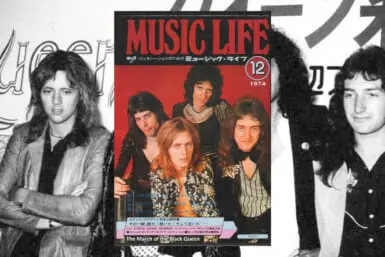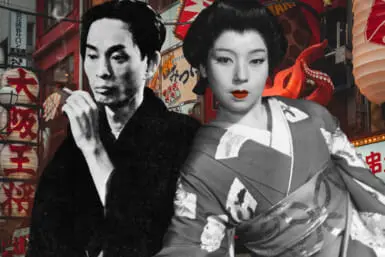Unlike in the West, where Valentine’s Day gift-giving is usually a reciprocal action, Japanese Valentine’s Day is traditionally used as an opportunity for women to show their affection. Be it chocolate, flowers or a more unconventional gift, the Japanese Valentine’s tradition provides women with an opportunity to give their own kokuhaku (confession of love) in a particularly patriarchal society.
White Day is celebrated a month later, on March 14. So how did this tradition, which is like a sister event to Valentine’s Day, come to find its place on the Japanese calendar?

How Did White Day Start?
The truth is that there are two tales claiming to be the origin story for this alternative holiday. The first, simpler, explanation is that in 1978, the National Confectionery Industry started the tradition as an “answer day” to Valentine’s. To be a little cynical, the one-sided nature of Valentine’s Day had opened a space for commercial businesses, who saw an opportunity to flog more confectionery, this time aimed at men.
The alternative White Day tale begins in Hakata, a popular area of Fukuoka, the capital city of Kyushu. As the legend goes, a lady had written a letter to a popular women’s magazine at the time, lamenting this imbalanced tradition. “It’s not really fair that men get chocolate from women on Valentine’s Day, but they don’t return the favor,” she wrote. “Why don’t they give us something? A handkerchief, candy, even marshmallows…”

An executive at Ishimura Manseido, a confectionery store in Kyushu, read the letter and latched onto the idea. Ishimura Manseido began crafting a new sweet treat made of marshmallow paste, with chocolate stuffed inside. These sweets were accompanied by an amorous confession: “I would like to take the chocolate I received from you and wrap it with my white heart.” In 1977, the first ever White Day was celebrated on March 14, referred to then as “Marshmallow Day.”
While “Marshmallow Day” itself didn’t gain much traction, the day was renamed, using the broader term, “White Day.” It gradually became popular, not only in Japan, but also in Taiwan, South Korea, China and Vietnam. By 2019, the estimated market size for the celebration was about ¥49 billion, approximately $325 million.
How is White Day Celebrated Today?
For men observing White Day, an unwritten sanbai gaeshi (triple the return) rule is generally followed. Supposedly, men should return gifts to women at least two to three times the value of whatever they received the previous month. In addition to marshmallows, white chocolate is also a popular gift, as well as candy, cookies and even “white” accessories, such as jewelry, bags, lotions and lingerie.

However, there has definitely been a decline in the overall popularity of White Day in recent years. From 2018 to 2019, the White Day market was estimated to have decreased by about 8%, equating to ¥4 billion. This fall in popularity might readily be attributed to the increasing change in gender roles seen throughout Japan. Given the heteronormative premise on which both Valentine’s Day and White Day are built, the nation’s increasingly diverse population has inevitably shifted away from the holidays that reinforce traditional gender roles.
The meaning of Valentine’s Day has similarly shifted in recent years. In a survey conducted in 2024, 2,500 Valentine chocolate shoppers were asked to whom they planned to give their sweet treats, to which 44.7% replied, family members. This disruption to the Japanese Valentine’s tradition will inevitably have an effect on White Day, too. In the wake of evolving gender dynamics in contemporary society, it’s unlikely the tradition will ever fully revive itself.









